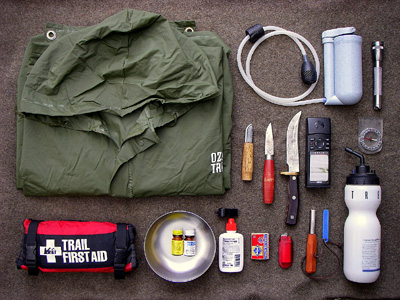There’s a lot of debate out there about what are the most important things for survival.
But we’re not here to debate. We’re here to provide a list of the 5 most important things for survival, so you can be prepared for anything.
Critical Survival Items:

- Water – You can only live 3-5 days without water. Store at least 1 gallon of water per person, per day.
- Food – Your body needs food for energy and to function properly. Make sure you have enough non-perishable food to last each person in your family for at least 3 days.
- Shelter – Shop tents, tarps, and other shelter supplies to protect yourself and your family from the elements.
- Clothing – Pack extra clothes and blankets in case of extreme temperatures or extended stays indoors.
- First aid is the initial care given to a sick or injured person. It is important to remember that first aid is only meant to be a temporary measure until professional medical help can arrive.
First aid kit
It’s no secret that having a first aid kit is one of the most important things you can have in your home. In the event of an emergency, a first aid kit can be a lifesaver, providing you with the necessary items to help treat minor injuries.
When putting together your first aid kit, it’s important to consider the types of injuries you may encounter in your home and the items you’ll need to treat them. Here’s a list of critical items you should include in your first aid kit:

• Bandages – These come in a variety of sizes and can help protect wounds from further injury and stop bleeding.
• Gauze – Gauze is also useful for protecting wounds, as well as helping to absorb fluids and stop bleeding.
• Antiseptic – This is important for cleaning and disinfecting wounds.
• Pain Relievers – Pain relievers such as ibuprofen can help reduce swelling and pain associated with minor injuries.
• Splints – Splints can be used to immobilize sprains, fractures, and dislocations.
• Anti-allergy Pills – These can help reduce allergic reactions to stings, bites, and other allergens.
• Tweezers – Tweezers are useful for removing splinters, ticks, and other foreign objects from the skin.
• Scissors – Scissors can be used to cut bandages, gauze, and clothing.
• Flashlight – A flashlight can be used to locate things in the dark and assess the severity of an injury.
• Thermometer – A thermometer can be used to measure the temperature of an injured person.
• CPR Mask – This can be used to administer mouth-to-mouth resuscitation.
• Glucose – Glucose tablets can provide a quick source of energy for someone who is injured or in shock.
• Emergency Contact Information – It’s important to keep emergency contact information in your first aid kit in case of an emergency.

These are just a few of the items you should include in your first aid kit. Of course, you can add additional items to your first aid kit, depending on your needs and the potential for injuries in your home.
Having a first aid kit is an essential part of any home. With the right items, you can be prepared to take care of minor injuries and help someone in an emergency. Hopefully, you’ll never have to use the items in your first aid kit, but it’s better to be safe than sorry.
Some of the most important things to remember in first aid are:
- Stop the bleeding. This is especially important if the person is injured and bleeding profusely. Bleeding can often be stopped by applying pressure to the wound with a clean cloth.
- Address any obvious broken bones or fractures. If there is a bone poking through the skin, do not try to push it back in. Immobilize the area as best as possible and wait for medical help.
- If the person is unconscious, check for signs of breathing and pulse. If there are none, begin CPR immediately.
- Treat for shock if necessary. Shock occurs when the body is not getting enough blood flow and can often be characterized by pale or cold skin, rapid heartbeat, and shallow breathing. If you suspect someone may be in shock, keep them warm and elevate their feet about 12 inches off the ground.
- Call for medical help as soon as possible and follow any instructions given by the dispatcher
- Navigation
One of the most important things to remember when heading into the wilderness is that navigation is key. Whether you are heading out for a day hike or planning a longer backpacking trip, knowing how to read a map and use a compass will help you stay on course and find your way back to safety.
Other important wilderness survival skills to remember include:
- Fire – Being able to start a fire can help you stay warm, cook food, and signal for help.
- Tools: In any survival situation, having the right tools can mean the difference between life and death. Here are five essential tools that every survivalist should have in their kit.
- A Good Knife: A good knife is one of the most versatile and important tools you can have in a survival situation. It can be used for everything from preparing food to building shelters.
- A Fire Starter: A fire starter is another essential tool for survival. In a pinch, it can be used to start a fire for warmth or to signal for help.
- A Flashlight: A flashlight can be used to signal for help or to illuminate your surroundings in low-light conditions.
- A Map and Compass: If you find yourself lost in the wilderness, a map and compass can help you find your way back to safety.
